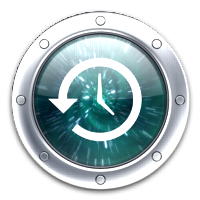Are there enough suckers in the world to make a market for Mac clones?


This is certainly a much different situation than the Mac market faced back in the mid-1990s, when a small group of clone makers kept taking share from Apple, especially in the high-margin top of the market.
I have followed with interest the recent tales of Psystar. My colleague Jason O'Grady posted his suspicions that the company is a hoax. And in our Apple Core poll on the question, 79 percent of responders agreed.
Larry Dignan posted pictures of the company's supposed location and said the clone maker's store is open for business. Maybe.
But really, the question should be on the buyer's side. Will anyone want to purchase any machine that this company might make? What is the value proposition of this unlicensed Mac clone?
There are so many unanswered questions.
Of course, an important value is likely to be cost. This company may offer a Mac version of the super-low end boxes that are gathered in the murky shallow-end, entry-level parts of the market. Apple's entry in this segment is the Mac mini, which starts at $599 — well above the segment and without many of the bits and pieces these machines come with. The Mac mini does come with Front Row and the Apple Remote controller as well as the iLife '08 content creation software suite.
But what about the other parts of the value proposition?
Can we imagine that Psystar could offer better, more reliable hardware than Apple? Nope.
Could Psystar offer a machine with better industrial design? Come on!
Could Psystar offer a faster machine? Well, perhaps, depending on where we might want to look.
Some say there's a spot between the single-processor Core 2-based iMac desktops and the dual-processor quad-core Xeon-based Mac Pro, which starts at $2,700. But would this set of customers want a mid-range expansion box so much that they would buy a hack machine? Unlikely.
Can a clone maker make a better high-end or low-end notebook than the MacBook Pro and MacBook, respectively? Sounds impossible.
Could it be that Psystar would offer a machine that fits a computing niche that Apple doesn't cover right now — other than cost? This too seems unlikely. Perhaps a super subnotebook?
Could a clone maker offer better service and support than Apple? Of course, not.
So, really when we get down to it, this clone machine is all about being cheap. That would appear to be a problem, since cheap the very thing that Mac users don't want. If you want cheap, get something else. But not a Mac.
Mac customers, whether long-timers or those newly switched over from the Windows camp, want quality. That's just what Apple is giving them.
Let's suppose that someone wanted a clone. It would be a conversation piece or something similar.
But would a customer have any confidence in the company supplying the clone? That's the point of the recent stories about Pystar's location.
It was much different back in the days when Apple had a licensing program. Apple was slow to market with new machines and its models were expensive. Even for a platform under great pressure from the Windows PCs, Mac clone makers saw an opportunity.
But did those companies back then look anything like Psystar? No way. Here's the list as I recall it:
Radius. This company was a longtime player in the high-end of the Mac market, making specialty video cards and multiprocessor accelerators, among other products. Once it was a high flyer in the Mac market. But it gambled that a NuBus clone would still have legs in the video production market even after Apple had a more-modern PCI system on the market. It was wrong and the company spiraled downwards. (Note: I worked for a startup in the Bay Are in the late 1990s that sold LCD flat-panel displays under the Radius brand.)
Power Computing. This company was started by CEO Stephen Kahng, who had made his money with Leading Edge, an early mail-order maker of PC clones. He had connections to volume manufacturing companies and supply chain. On his team were former Apple hardware engineers and PC marketing execs.
UMAX Computer. This was a branch of a Taiwanese technology vendor, known in the Mac market for its scanners. The company manufactured PC logic boards.
Motorola Computer Group. This company produced lines of clones with the StarMax brand. I was very impressed with the high-performance machines the company demonstrated before the licensing program was killed by Steve Jobs.
APS Technologies. A longtime maker of storage for the Mac market, the company sold its M*Power clones, which were manufactured by Motorola.
All of these companies were established companies in the market. Many had excellent technological backing, manufacturing expertise and a place in the channel. There's no surprise about this, unlike the situation with Psystar, Apple approved of the licensee.
Customers were confident in the clones. In the first half of 1995, Mac cloners had less than 1 percent of the market; but by the third quarter of 1996, the competitors had a 13.6 percent share.
Back then, the clones appealed to some business customers looking for a cheaper Mac. There might be some kind of risk involved in going with a non-Apple Mac but with the licensing program, many Mac users went with the alternative.
But today, Apple provides high-quality, reasonably-priced machines with good support. Are business willing to take a risk on their productivity and data for a cloned Mac? Or consumers?
No way.